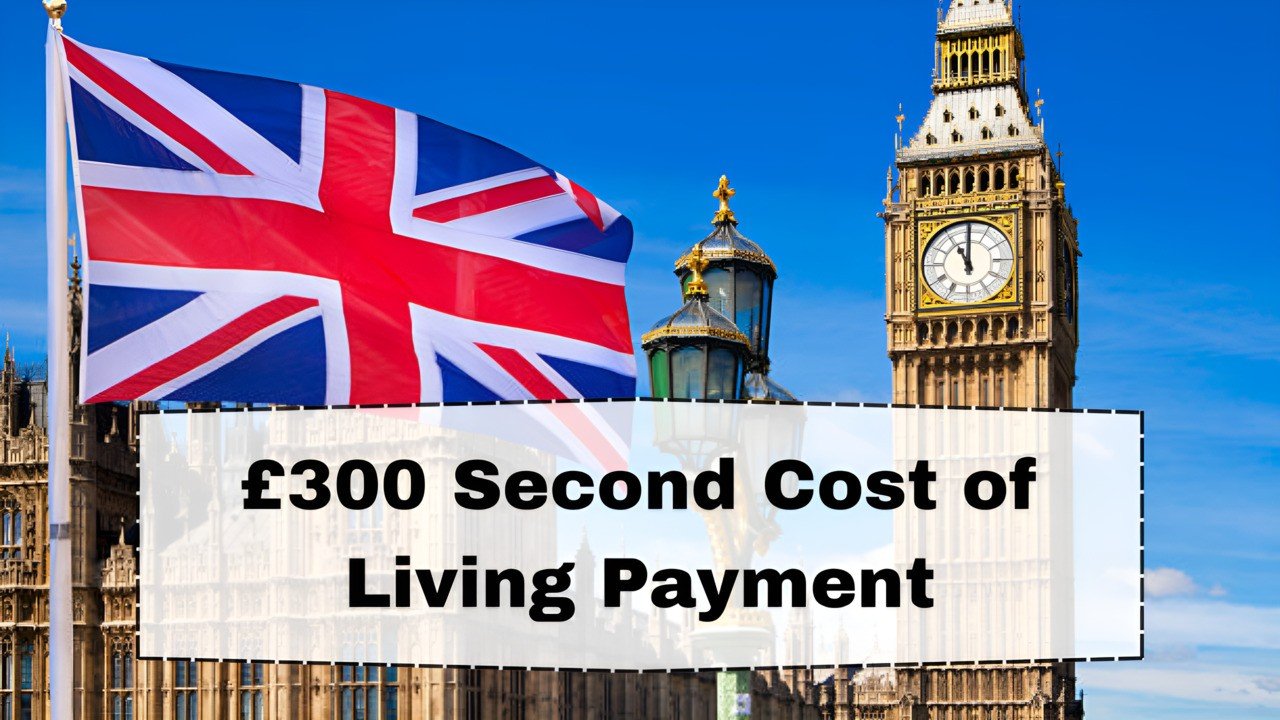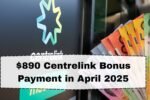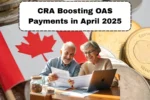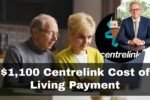The UK government has confirmed the second instalment of the £300 cost of living payment. This payment is designed to provide essential financial support to low-income individuals and families who are struggling with everyday living costs. Whether it’s helping with energy bills, food, or rent, this payment aims to relieve the financial burden of the most vulnerable groups in society.
In this article, we’ll break down the eligibility criteria, payment schedule, and all other important details you need to know about the UK’s second £300 cost of living payment.
What is the £300 Second Cost of Living Payment?
The UK government, through the Department for Work and Pensions (DWP), has confirmed the second of three cost of living payments, worth £300. This initiative is part of a wider package aimed at supporting individuals who are on qualifying benefits, such as Universal Credit, Pension Credit, and others. The payment is designed to help cover the rising costs of essentials, particularly during challenging financial periods like the winter months.
The £300 payment will be automatically issued to eligible individuals. If you are already receiving benefits like Universal Credit or Pension Credit, you won’t need to apply for this support, as the payment will be processed automatically.
Key Highlights of the £300 Cost of Living Payment
| Particulars | Details |
|---|---|
| Program Name | Cost of Living Payment |
| Providing Authority | Department for Work and Pensions (DWP) |
| Payment Amount | £300 (additional payments may be available based on eligibility) |
| Eligible Benefits | Universal Credit, Pension Credit, Working Tax Credit, Child Tax Credit, ESA, JSA, Housing Benefit |
| Payment Dates | Spring 2025, Summer 2025, and Autumn 2025 |
| Claim Process | Automatic payments for eligible individuals, manual claims for late applicants |
| Category | Finance |
| Official Website | UK Government |
Who is Eligible for the £300 Cost of Living Payment?
To qualify for the £300 cost of living payment, you must be receiving at least one of the following benefits during the specified qualifying period:
- Universal Credit
- Pension Credit
- Income Support
- Jobseeker’s Allowance (JSA) Income-based
- Employment and Support Allowance (ESA) Income-related
- Working Tax Credit
- Child Tax Credit
If you are eligible for more than one benefit, such as both HMRC-administered tax credits (Child Tax Credit or Working Tax Credit) and DWP benefits, the payment will come from DWP. Individuals who receive both Working Tax Credit and Child Tax Credit will only receive a single payment, typically linked to Child Tax Credit.
For senior citizens who were previously eligible for a higher winter fuel payment, the cost of living payment will provide additional relief to help cover rising costs, particularly those impacted by recent changes in means-testing criteria.
Eligibility for the Disability Cost of Living Payment
In addition to the £300 cost of living payment, some individuals may qualify for an extra £150 payment specifically for disability-related living costs. This payment will be available to those who are receiving one of the following disability benefits:
- Attendance Allowance
- Armed Forces Independence Payment
- Disability Living Allowance
- Constant Attendance Allowance
- Personal Independence Payment (PIP)
These individuals will automatically receive the additional payment to help with the extra costs of living with a disability.
Payment Distribution and Dates
The cost of living payment will be distributed directly to the bank accounts of eligible individuals. The payments will be non-taxable and will not impact your eligibility for other benefits. You do not need to take any action if your details are up to date, as the payment will be processed automatically.
Payment distribution will occur in three instalments:
- Spring 2025: The first payment of £310
- Summer 2025: The second payment of £300 (the one discussed here)
- Autumn 2025: The third payment of £299
If you haven’t received your payment by the expected date, you can report it as missing using the official UK Government website starting from April 20.
What to Do if You Miss Your Payment
If you believe you should have received the payment but haven’t, you should check the following before submitting a missing payment claim:
- Confirm Eligibility: Ensure that you met the eligibility criteria during the qualifying period.
- Check Your Bank Account: Double-check that your payment hasn’t been deposited into your bank account.
- Verify Your Banking Details: Ensure that your bank information is up to date with DWP or HMRC.
If your details are correct and the payment is still missing, you can report the issue via the official UK Government website.
Frequently Asked Questions (FAQs)
When will the payment be distributed?
The payment will be distributed in Spring, Summer, and Autumn 2025. Specific dates will be confirmed closer to the time.
How do I apply for the £300 cost of living payment?
You do not need to apply for the £300 cost of living payment. If you are eligible, the payment will be made automatically based on your benefit records.
Are these payments taxable?
No, the cost of living payments are not taxable and will not affect your eligibility for other benefits. You do not need to report them on your income tax return.
Conclusion
The £300 Second Cost of Living Payment is a crucial financial support mechanism for those who are struggling to make ends meet. If you are eligible, you’ll receive the payment automatically, providing much-needed relief for your essential living costs. Ensure your details are up to date with the DWP or HMRC to avoid any delays, and remember, the government is here to support you during these tough times. Stay informed and make sure to check your eligibility to ensure you don’t miss out on this financial assistance.
For more information, visit the UK Government website or contact the relevant support agencies for further guidance.



